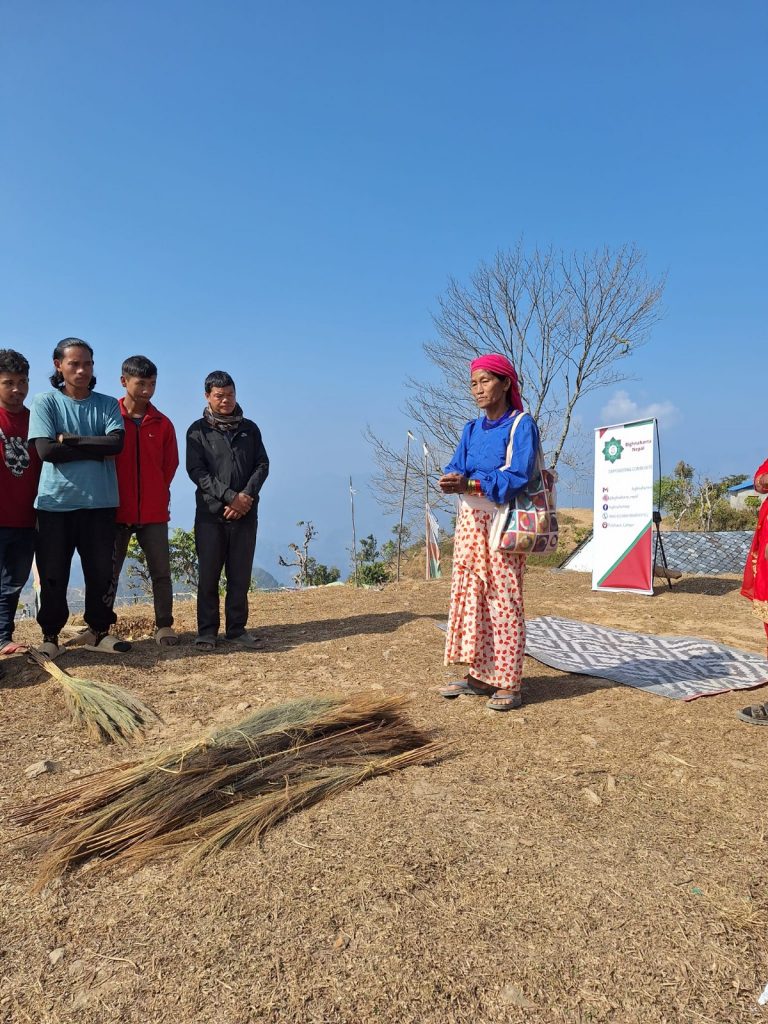
🛑 A lot of the trash that reaches our coasts doesn’t start there. It flows from unmanaged waste systems into rivers, then out to the sea. Plastic — made for convenience — is now part of daily life, but it often ends up where it shouldn’t: in our water, food, and even the air we breathe.
This is why the International Coastal Cleanup (ICC) is so powerful. Every September, millions of volunteers worldwide come together to clean beaches, rivers, and lakes — removing more than 220 million pounds of trash over the past three decades. Beyond the cleanup, ICC shows what’s possible when communities, businesses, and organizations work side by side.
Today, in Barangay Bulata, Philippines, local residents, youth, and community leaders joined this global movement. Their cleanup may have lasted only a morning, but the impact goes far beyond the shoreline. Each piece of trash collected becomes part of the ICC’s global dataset — information that helps shape solutions to our shared plastic crisis. And each participant becomes part of a much bigger story: that of people everywhere taking action to protect the places they call home.
At Communities for Nature (CfN), we carry this energy forward all year with projects that go beyond cleanups to protect what matters most:
🌊 Blue carbon ecosystems — Oceanus Conservation and partners are restoring mangroves and coastal habitats that capture carbon, shield shorelines, and sustain local livelihoods.
🌱 Marine and terrestrial biodiversity — Philippine Reef and Rainforest Conservation Foundation, together with the people of Barangay Bulata, are ensuring healthy ecosystems that support communities, protect wildlife, and sustain local tourism.
🤝 Corporate–community partnerships — co-creating solutions with LMAX Group and Security Bank that strengthen ESG commitments while delivering measurable impact for both people and nature.
Clean and healthy waterways don’t just benefit coastal families — they benefit industries, supply chains, and communities everywhere. What happens along the shoreline has ripple effects all the way to the boardroom.
From shorelines to boardrooms, we’re all connected by water. Let’s work together to protect it for generations to come!
#InternationalCoastalCleanup #CommunitiesForNature #PeopleAndPlanet
We’re excited to share something big with our community: Rosa Care Organisation, a women-led, community-rooted movement from Zimbabwe, is now part of the Communities for Nature (CfN) network.
And this isn’t just another partnership. It’s a signal of where we’re headed, and who we’re standing with.
For nearly two decades, Rosa Care has stood with rural women, girls, and marginalized communities—leading initiatives that uplift not just individuals, but entire ecosystems of care, leadership, and resilience. Our work is grounded in a simple truth: when women lead, transformation is real, lasting, and far-reaching.
This partnership is not about charity. It’s about solidarity and scale—about investing in the people who are already leading change where it matters most.
Who is Rosa Care?
A community-rooted org that:
Going deeper than superficial intervention, they’re transforming systems from the ground up—through health, education, livelihoods, climate action, and more.
Rosa Care is proof that some of the most powerful work in conservation and development is already happening—and we need to get behind it.” — Rhoda Phillips, CEO, Communities for Nature
Why this partnership matters
Rosa Care doesn’t just deliver aid. They build power. Through grassroots environmental leadership, sustainable livelihoods, education, and health, they are reshaping systems from the ground up—with women and girls at the heart of it all.
Together, our goal is to grow a movement that is:
• Locally-led, not externally imposed
• Rooted in dignity, not dependency
• Designed to last, not to impress
“We’ve been building communities for years—supporting women as agents of real change. This partnership with CfN allows us to scale that work with solidarity and shared purpose.”
— Forbes Chikobvu, Coordinating Director, Rosa Care Organisation
To our funder friends, this is your invitation: If you’re looking for impact that is intersectional, feminist, climate-resilient, and built to endure—look no further. Funders who walk with us invest in:
• Women’s environmental leadership
• Community-driven renewable energy and climate justice
• Sustainable livelihoods and systems-level change
This is your opportunity to support bold, rooted, women-led work that’s already changing lives. Not from the top down—but from the soil up.
#FundFeministFutures #WomenLeadChange #ClimateJustice #GrassrootsPower #DecolonizeDevelopment #CommunitiesForNature #RosaCareOrganisation #CommunitiesForNature FundTheFrontlines #ClimateJustice #GenderEquality
Ankita Shah‘s journey in conservation began far from the city where she was born, Kathmandu, Nepal, and even further from the comfort of traditional career paths. Growing up, she was deeply empathetic, always aware of the challenges faced by those less privileged. This sense of purpose led her to work in social development, but for years, she struggled in environments where her ideas were dismissed, and her contributions went unrecognized—often simply because she was a woman.
Then, in 2015, everything changed. When an 8.1 magnitude earthquake struck Nepal, Ankita witnessed firsthand the resilience of communities facing immense loss. Among them were women who, despite hardship, were not only rebuilding their homes but also leading efforts to restore their communities. It became clear to her: women were not just caretakers; they were changemakers.
One such woman was Sun Maya Ama. At 63, she had spent decades supporting her family and community by making brooms from omriso—broom grass—gathered from the forest. In her youth, this was simply a means of survival. But over time, she began teaching other women, creating opportunities for them to earn income and support their households.

Inspired by Sun Maya Ama and other women like her, Ankita and her team from Bighnaharta Nepal launched an initiative in 2019 to reintroduce broom grass planting on a commercial scale. This effort connected communities with fair market opportunities, engaged women from over 110 households, and significantly reduced landslides by 90% due to the plant’s deep-rooted benefits for soil stability.
Sun Maya Ama shared with Ankita,
“For years, I worked in poverty and scarcity. Now, the skills I used to survive have become my identity. I’m not just taking care of my family—I’m taking care of our land, our future, and helping other women do the same.”
Through this work, Ankita has seen how investing in women leads to lasting impact—not only in economic empowerment but also in environmental restoration. These women are protecting their lands, leading conservation efforts, and strengthening their communities from the ground up.
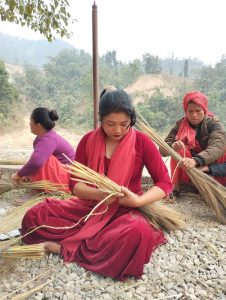
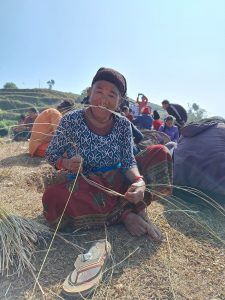
What started as a small initiative has grown into a model for sustainable conservation, proving that when we support women, we support nature itself. Ankita’s journey has been about more than just personal transformation; it’s about creating opportunities for women to lead and thrive in conservation.
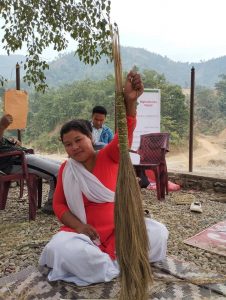
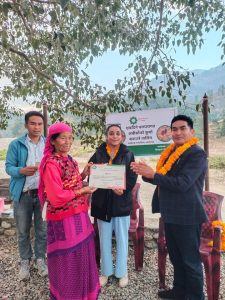
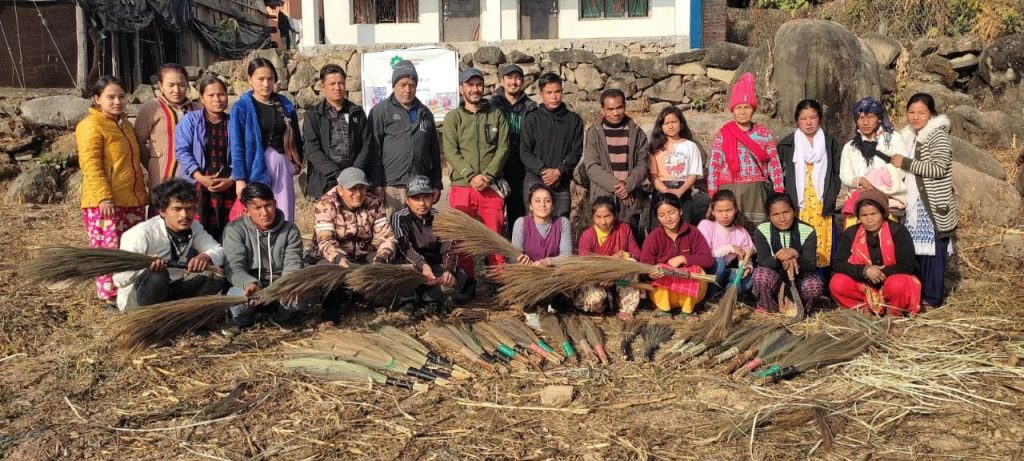
With the right support, these efforts can expand, reaching more communities and creating lasting change. Investing in women-led conservation initiatives is about more than environmental protection—it’s about dismantling barriers that have long excluded women from decision-making, ensuring they have the resources and opportunities to lead. When women have a stake in conservation, they drive solutions that not only restore ecosystems but also build more just, self-sufficient communities where economic security and environmental stewardship go hand in hand.
[ Watch Ankita’s TED talk here ]
In the dense and verdant landscapes of West Kalimantan, Borneo, the fight to preserve the island’s ecological heartbeat is championed by dedicated conservationists. Among them is Nur Febriani, a woman whose journey from public health to environmental advocacy is as inspiring as it is transformative.
Febri, as she is fondly called, is the Director of Resource Mobilization at Yayasan Alam Sehat Lestari (ASRI), an organization pioneering an integrated approach to healthcare and conservation. Prior to this role, she served as ASRI’s Executive Director for seven years, steering the organization toward impactful solutions that intertwine human well-being with environmental stewardship.
Born and raised in West Kalimantan, Febri’s journey into conservation was not a direct one. She holds a background in Public Health and Epidemiology, having graduated from the University of Indonesia. Even before completing her studies, she was already immersed in humanitarian work, joining the response efforts for the 2004 Indian Ocean earthquake and tsunami. This firsthand experience of working at the grassroots level ignited her passion for social impact, shaping her commitment to community-driven change.
For over a decade, Febri dedicated herself to improving public health across Indonesia. She led the Foundation for Mother and Child Health Indonesia in Jakarta for nearly five years and worked with both the Indonesian Red Cross and the International Federation of Red Cross and Red Crescent Societies (IFRC). Her role at IFRC deepened her understanding of disaster risk reduction, where she witnessed firsthand how environmental degradation exacerbates vulnerabilities in communities. It was through this lens that she began seeing the inextricable link between health and conservation.
Despite her extensive background in public health, Febri felt a deeper calling—one that led her back to her homeland in Borneo. In 2018, she joined ASRI, an organization that embodies the very synergy she had been seeking: a holistic model where healthcare incentives drive conservation outcomes.
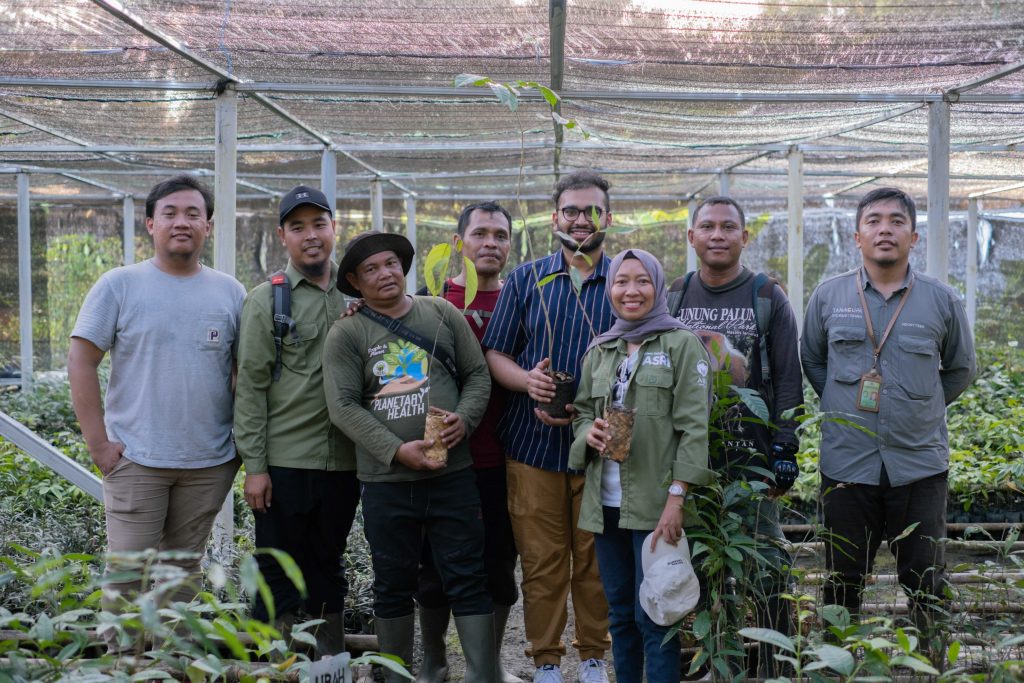
photo c/o ASRI
ASRI’s approach is unique, offering affordable healthcare services to communities in exchange for commitments to protect the rainforest. Under Febri’s leadership, ASRI expanded its impact, demonstrating that conservation is not just about protecting trees but also about ensuring the well-being of the people who depend on them.
For Febri, ASRI represents a rare and powerful opportunity to unite her passions. “I want the image of Borneo to remain as the ‘lungs of the earth,’” she says. Through ASRI, she has helped amplify the skills and capacities of local communities, proving that conservation and human welfare are not opposing forces but rather two sides of the same coin.
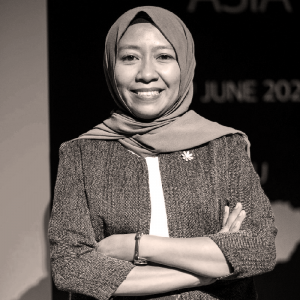
As a woman conservationist, Febri has navigated the challenges of leading in a traditionally male-dominated space. She recalls moments when she led meetings with her team, gaining their trust through careful listening rather than immediate confrontation. “At first, there was hesitation,” she says. “But when I explained that the program would provide them with hundreds of fruit trees—durian, jackfruit, and hardwood species—they started to see the value. We reassured them that while hardwood trees could not be cut, the fruit trees would provide sustainable income for years to come.”
This patient and empathetic approach, rooted in ASRI’s principle of radical listening, allowed her to bridge the gap between conservation efforts and local economic realities. She understood that true change comes not through force, but through understanding and collaboration.
Among her favorite projects at ASRI is the Chainsaw Buyback and Reforestation program. Rather than criminalizing loggers, ASRI provides them with alternative livelihoods, recognizing that most of them cut trees out of necessity rather than malice. “We don’t judge loggers as bad people,” Febri explains. “They are fathers and husbands trying to provide for their families. If we offer them a sustainable alternative, many of them willingly transition.”
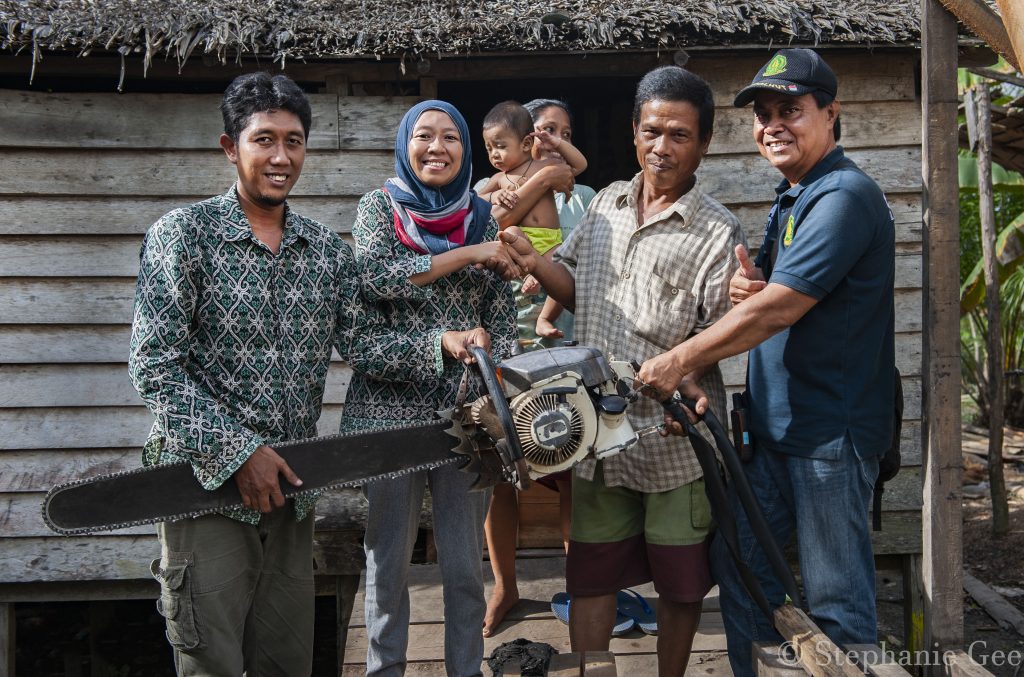
photo c/o ASRI
The results speak for themselves: Since 2017, more than 300 former loggers have left deforestation behind, setting up new businesses and even encouraging their peers to do the same. The reforestation efforts, too, have been deeply rewarding. Seeing wildlife return to restored habitats, captured through ASRI’s camera traps, fills Febri with awe. “It’s amazing to see that what we are doing is working. The land is healing, and wildlife is coming back to what was once their home.”
Febri’s work at ASRI is a testament to the power of interdisciplinary action. By merging public health with environmental advocacy, she has contributed to a model that not only restores forests but also uplifts lives. Her journey—from responding to disasters to spearheading conservation-led health initiatives—serves as an inspiration for those seeking to create meaningful, intersectional change.
Through her leadership and unwavering dedication, Febri is ensuring that the story of Borneo remains one of resilience, sustainability, and hope. Her work continues to shape a future where both people and nature thrive together, reinforcing the idea that when we heal the planet, we heal ourselves.
She shares another quote from one of the most authentic collections of hadith (sayings and actions of Prophet Muhammad ﷺ) in Islam that resonates with her mission:
“There is none amongst the Muslims who plants a tree or sows seeds, and then a bird, or a person, or an animal eats from it, but it is regarded as a charitable gift (Sadaqah) for him.”
[Sahih al-Bukhari, 2320]
This hadith emphasizes the lasting reward (Sadaqatul Jaariya) of planting trees and highlights the deep connection between faith, sustainability, and environmental stewardship. It aligns beautifully with Febri’s work in conservation, where reforestation benefits both people and wildlife for generations.
“When a tree stands for tens or even hundreds of years, it continues to give even when we are no longer here. This is real work on the ground, and that is what keeps me going.”
Febri’s message is clear: no matter our background, we all have a role in protecting our environment. “We live on the same planet, we are connected, and our health depends on nature’s health. Let’s support each other in our journey to save our nature.”
insights by Rhoda Phillips, CfN Chair and Founder
As we celebrate International Women’s Day, I reflect on the powerful role women play in conservation and how our collective efforts can shape a more sustainable, inclusive world. My journey as a conservationist has been defined by collaboration, determination, and the unwavering belief that real change happens when we work together – with all sectors of society, with people from different professions and walks of life.
Recent weeks have taken me on a transformative journey in the Philippines, where we launched Project MITHI (Mangrove-based Initiatives for Thriving Habitats and Inclusive Communities). This initiative, in partnership with Security Bank Corporation and Oceanus Conservation, is a crucial step toward rehabilitating and protecting mangroves—essential for biodiversity, carbon sequestration, and climate adaptation.
My visit to project sites in Aringay, Bauang, and Bais City reaffirmed the power of community-driven conservation. I witnessed firsthand the dedication of local leaders, marine guardians, and entrepreneurs like Delailah Lacadue who leads the Dulao Fishpond/ Fishpen Producers Cooperative has sustained her livelihood together with her neighbours, through nurturing mangrove ecosystems. These encounters deepened my conviction that communities are not just beneficiaries of conservation but its strongest champions.
Over the past two years, Communities for Nature (CfN) has forged nine global partnerships spanning academia, corporate sectors, local governments, and grassroots organisations. These alliances have driven ecosystem regeneration, education initiatives, and community- led actions across Asia and Europe.
As a woman in conservation, I understand the challenges of navigating a traditionally male-dominated field. But I also know that leadership is not about standing alone—it’s about bringing people together. Women have always been at the heart of environmental stewardship, from local fishers to climate activists, and our voices must continue shaping policies, funding priorities, and action plans.
Looking ahead, my vision for Communities for Nature in 2025 is clear:
✅Strengthen and expand partnerships that prioritise local leadership and sustainable impact. ✅ Advocate for long-term, inclusive conservation funding that benefits both people and ecosystems. ✅ Champion women in conservation, ensuring they have the resources, recognition, and influence they deserve.
A strategic blend of adaptability and unwavering dedication is advocated for in navigating the dynamic landscape of conservation and community development. Embracing new technologies, creative solutions, and continuous learning is essential, but staying anchored in core principles and unwavering focus is equally critical. By embracing change while upholding foundational values, a sustainable course towards shared objectives can be charted, ensuring enduring progress in conservation and community endeavours.
Communities for Nature envisions a future where the nexus of conservation and community development thrives through collective learning, collaboration, and synergy. By forging strategic partnerships and unwaveringly upholding our values, the seeds of sustainability, resilience, and prosperity are sown, which will become a legacy for generations to come.
Conservation is not just about protecting nature—it’s about securing a just and thriving future for all. This International Women’s Day, let’s commit to building stronger collaborations, uplifting diverse voices, and investing in nature’s true stewards: the communities who live and breathe conservation every day.
If you’re interested in partnering with Communities for Nature, let’s connect. Together, we can turn vision into action.
Nature is our most powerful ally in securing a future that is sustainable, just, and flourishing. Yet, financial support for conservation remains insufficient and often fragmented, limiting the scale and impact of initiatives on the ground.
At Communities for Nature (CfN), we witness firsthand how local action drives global change. Communities already have the knowledge and leadership to drive conservation. The best climate solutions are nature-based, community-led and gleaned from indigenous wisdom. What’s needed is the right investment to amplify their impact and sustain their efforts.
From Gaps to Gains: Transforming Financial Flows for Nature and Communities
The current funding landscape often prioritizes short-term interventions over lasting change. To build enduring environmental and social resilience, we must reimagine conservation financing. Here’s how we can work together:
✅ Channel Resources Directly to Local Solutions Community-led initiatives are at the heart of conservation. By ensuring funding reaches grassroots efforts, we strengthen those who know their landscapes best and foster thriving ecosystems and sustainable livelihoods.
✅ Prioritize Long-Term Funding Models Short-term grants provide temporary relief but seldom enable real transformation. Multi-year commitments ensure that ecosystem recovery and community-driven conservation efforts can take root and flourish.
✅ Leverage Blended Finance The most effective conservation strategies combine philanthropy, public funding, and impact investments. By bringing these sectors together, we can amplify outcomes, reduce financial risk, and unlock new opportunities for nature-based solutions.
✅ Support Nature-Based Solutions Mangrove regeneration, watershed protection, and sustainable fisheries are not just conservation projects—they are climate adaptation strategies that protect livelihoods, mitigate climate impacts, and drive economic resilience.
Authentic connections, well-thought out investments for deeper impact
On this World Wildlife Day, we invite funders, partners, and changemakers to rethink how we finance conservation. Let’s shift from short-term aid to long-term investment, ensuring that every dollar supports not just survival, but regeneration, abundance, and a thriving future for all.
Are you ready to be part of this transformation? Let’s talk about how we can collaborate!
#CommunitiesForNature #WorldWildlifeDay #InvestInNature
Some find reflection and goal-setting at the beginning of a new year a bit of a cliche, but for me, I find it quite therapeutic. The practice helps me keep our vision for CfN continually front of mind and as such, I thought I’d jot down a few of my thoughts below.
There is no doubt that the damage climate change is doing to our world is unprecedented. Research shows that 3.6 billion people already live in areas highly susceptible to climate change. And that between 2030 and 2050, climate change is expected to cause approximately 250,000 additional deaths per year, from undernutrition, malaria, diarrhea and heat stress alone. This is NOT the outcome we want.
Our vision at CfN is to empower communities around the world most impacted by climate change, to be part of the change.
We do this by connecting forward-thinking NGOs with like-minded corporate partners and funders so they can work together on nature-based solutions. This type of collaboration with the right resources, support, and tools leads to innovative solutions that tackle the unique challenges these communities face.
Communities can then thrive amidst the extreme weather conditions that affect their way of life. And corporations can meet growing ESG demands from all their many, many stakeholders. Truly a win-win for all.
This year, we want to continue to grow and learn. We are a young, but dynamic, organisation, with so much ahead of us. Through carefully-curated partnerships, we aim to leverage both parties’ resources and expertise to drive real, tangible change among the communities we work with today. We have already done so much good in our ACE project with LMAX Group and Philippine Reef and Rainforest Conservation Foundation, Inc. And we continue to actively seek out opportunities to implement scalable climate projects while promoting grassroots involvement. (More to come on our partnership with ASRI soon!) This is no easy task, but we are up for it!
Looking even further ahead, we hope to expand our global presence even more and establish a reputation as a trusted organisation in the field of community-led climate action.
A major goal of ours is to develop sustainable models of development that integrate environmental and social considerations. Ones that can be replicated with ease and provide immediate impact. This will empower communities to be resilient in the face of climate change.
Also, through engaging and immersive learning, we will raise a generation of young people who will become tomorrow’s conservationists. Good citizens of the world who truly care and take action to look after the planet. Additionally, we will advocate for policy changes and collaborate with international organisations and governments to bring about systemic change and greater support for community-driven initiatives.
At the highest level, our vision is to make the world a better place, one community at a time. To leave a lasting legacy of resilient and empowered environmentally-focused partnerships – inspiring both corporations and communities to embrace sustainable practices, mitigate the impacts of climate change, and inspire others (especially the youth) to take action.
My career has ranged from conservation projects for a British NGO in the Fiji Islands, Honduras and the Philippines, to community tourism initiatives in Northern Pakistan with the Aga Khan Foundation in my early twenties. I lived there for 20 months in 1991, after making my first overland journey across Asia as a hungry 18-year-old seeking adventure and truth.
I have also held many diverse roles as a project manager, such as working in fashion for a merchandising consultancy in Paris and as a Look and Feel manager for the London 2012 Olympic and Paralympic Games. I have also led special interest tours through India and France, and diving expeditions around the World, including seaplane diving tours in the Maldives.
Since the pandemic and living in London, I have been lucky enough to work in the NHS. The people I work with are committed and have service at the very heart of their careers. I leave at the end of the day knowing only kindness is given, very much like a trustee gets to put the benefits of others’ wellbeing at the heart of every story.
The call of conservation – and community
I grew up in Borneo, surrounded by the beauty of biodiversity and adventures in nature. This privileged upbringing allowed me to witness first-hand the importance of conserving nature above one’s own immediate gratifications. Conservation work is all about good decision making.
My first conservation work was in Northern Pakistan with the Aga Khan Foundation. The project took me to communities living in balance and reciprocity with the natural world, even in some of the harshest and most hostile environments. One of the best experiences I witnessed there was after the valley opened with new built roads – many communities prioritised educating women now they could get access to school, resulting in a rapid improvement in general health and welfare, and uptake in education.
During my time with Coral Cay Conservation, I had my first experience of citizen science, which taught me the key lesson that good leaders learn most from hands on experience and being able to see issues from multiple perspectives. You can gain essential life experience from diverse interactions with the natural world and participating in scientific research, and it’s clear to me that nature’s classroom nurtures leadership qualities and improves decision making.
For example, in the Philippines, I witnessed the families of Bulata restarting their livelihoods again after a typhoon. Community leaders purposefully chose to preserve the Marine Sanctuary, despite the urgent need to feed themselves, because the importance of long-term preservation is widely understood as essential to the future of the island. Many of these community leaders then encouraged their own children to become the next generation of trustees for the sanctuary.
The power of these types of decisions for the betterment of many truly inspires me. Change may often take time and energy, but the benefits are clear. Conservation isn’t a luxury endeavor, but an art of living to be shared.
Becoming a Communities for Nature trustee
I met Rhoda on Danjugan island, when I was an expedition leader and project manager for another site. This project site had to close overnight for security reasons, and we approached our country partners, the Philippine Reef and Rainforest Conservation Foundation Inc. (PRRCFI) for help. Rhoda was the new island manager, so we had to rely on each other’s support and humor as we reallocated resources over to Danjugan Island.
Since then, Rhoda and I have stayed close friends, and when she approached me to be a Communities for Nature trustee, I knew both of our skillsets and instinctive ability to embrace change would lead us to make a successful team.
Being a trustee is a chance to nurture the values I believe in. I am happy to be involved in protecting biodiversity, promoting local community livelihoods, good governance and decision making. I am also aligned with Community for Nature’s transparency at every stage of our work. From where our funding comes from, to the communities and projects initiated, and the impact of our work.
Every day I am learning through our work how interconnected we are and discovering new ways to share skills, insights and resources, for the benefit of many. Drawing upon my own career as a project manager and leading expeditions, the key to building strong relationships is mutual respect and compassion.
I am also continually inspired by the trustees in the Philippines. They give Communities for Nature a sound foundation and selfless guidance to grow and build, especially in our first partnership with LMAX Group. There are so many projects and communities working to keep nature at the heart of life. These are the people we want to partner with.
The mutual model
As a trustee, it’s fantastic to see corporations wanting to make good decisions for the future, and our direct partnership model offers them a chance to really be hands on.
There is no blind donation. Each partnership is a co-designed, mutually respectful and beneficial relationship. Both groups, community and company, have different goals and objectives for the continuation of their work and lives and Communities for Nature can unite the two groups to find a common ground in which all can thrive.
Corporate sponsors benefit from the outlet for positive financial donations, meeting their ESG targets and having the chance to witness direct change because of their actions by interacting with communities directly and visiting their partnership in action, at the source.
Communities benefit from this as it provides an opportunity to grow and protect their people, culture, and resources by educating others, on a global platform, the struggles, and successes of their way of life.
To the horizon
Looking ahead, in the short term, our goal is to secure more partnerships in the Philippines, but the long-term future of Communities for Nature is bringing people together and facilitating more immersive experiences between the communities and corporate benefactors. Currently, this is assisted through technology, which is great for reaching out to a wider audience, but it doesn’t compare to the fulfillment and joy of direct hands-on experience.
I believe we are nature, and we are all constantly changing. This value enhances my sense of wonder and curiosity, growing my understanding and helping me to make trustee decisions with ease.
ACE Science Officer Franz Anthony Alejano tells us about how the partnership is working to put citizen science into practice around Danjugan Island.
Community engagement is a core principle running through all the initiatives developed by the Actions for Communities and Environment (ACE) partnership we have established between PRRCFI and LMAX Group.
When it comes to environmental education and community capacity building, this runs to a familiar format. But what does this mean when it comes to the science of conservation?
Recently, we were fortunate enough to sit down with ACE’s Danjugan Island-based Science Officer, Franz Anthony Alejano to learn more about ‘Citizen Science’.
He recently took part in training on MPA-FishMApp, an exciting program which makes it straightforward to gather data on the size of local fish populations, and compare what is going on inside and outside the local Marine Protected Area.
With this training under their belts, Franz and his colleagues can now begin to harness the power of citizen science, by passing on their knowledge of MPA-FishMApp to local people, building a team of citizen scientists to operate in Danjugan’s waters.
What is citizen science, and what are the benefits of using citizen scientists?
For me, citizen science is a valuable tool that can help us build communities that collaborate to find out more about their home. Any program or project that engages the public in scientific research uses the citizen science approach.
There are so many benefits. Because it encourages mass participation there is increased potential for data collection and analysis capacity. Then there is the chance of improving scientific literacy amongst the public and greater community engagement. All of this, and of course the fact that we are able to enhance the impact of our research.
Can you tell us about the training you received to put citizen science into practice around Danjugan?
PRRCFI is a member of the Southern Negros Coastal Development and Management Council (SNCDMC) alongside a number of different local government units working under the Municipal Agriculture Office and Environmental and Natural Resources Office. The MPA-FishMApp training was organized for the Council and three other PRRCFI staff members and I joined the council at the workshop in Sipalay City.
At the training, we were taken through how to use MPA-FishMApp which is basically a tool that allows citizen scientists to quickly and efficiently record data on fish species. It has a simple interface allowing users to enter and store information on 21 reef fish and two invertebrate species groups. Using built in algorithms MPA-FishMApp can then generate data visualizations to show trends in fish density and biomass, and changes over time.
Now we have had this training we will be able to upskill a wider group of citizen scientists to get involved with the next Fish Visual Census.
You are doing this work as part of the local reef monitoring team. Why is it important to monitor the reef and marine environment around Danjugan Island? How will the data you gather be used?
Monitoring the reef and marine environment around Danjugan Island is important to assess the health of the reef, identify threats, and take steps to protect it.
Monitoring can also help to track the progress of our conservation efforts. The first data we gathered can be used as a baseline for ongoing annual fish monitoring and inform the development of conservation efforts in the future.
What are the timings for the Fish Visual Census?
We conducted the first Fish Visual Census in April 2023 in identified sites around the island and the fished sites across the mainland in Bulata, Cauayan. These will be the permanent monitoring sites that need to be surveyed every year by the team of citizen scientists we train up.
We understand the data is yet to be finalized but can you give us an impression of what you found doing the census?
It was pretty obvious that there were fewer fish in the fished sites than in the protected ones. The fish we saw the most were triggerfishes, surgeonfishes, parrotfishes, butterflyfishes and damselfishes. It was actually quite surprising for us to observe a good number of damselfish, especially in the fished sites, so it will be interesting to track the data that relates to this observation.
The survey work has happened as part of the ACE Project, the partnership between LMAX and PRRCFI brought together by Communities for Nature – how important is it to bring in funding and support for this type of project? What does it mean for the MPA, and wider efforts to protect the environment and improve biodiversity?
Reef monitoring is essential for the conservation of coral reefs, but it can be expensive at times. That’s why it’s important to bring in funding and support for this important work. This funding can help cover the costs of reef monitoring, such as equipment, training, and travel and it can make sure that reef monitoring programs are ongoing and sustainable.
Meet Kaila Trebol, biologist, artist and Communities for Nature trustee.
Kaila Trebol is one of the group of committed, passionate trustees who have come together with Communities for Nature founder Rhoda Phillips to make the charity’s vision ‘to build a sustainable future for all’ a reality. Kaila is biologist with more than two decades of experience working for renowned conservation organisations, as well as a talented artist. We asked her to tell us a little about the path her career has taken, and what drives to her when it comes to her work in conservation and sustainable development.
Can you tell us a bit about your career background and current roles outside of your work as a Communities for Nature trustee?
I am a biologist and artist with over 22 years of conservation work experience with organizations like World Wide Fund for Nature, Ocean Adventure, Flora and Fauna International, Talarak Foundation and GIZ. I started my career as a coral reef researcher then moved towards education and project management. Presently, I am an active working trustee for the Philippine Reef and Rainforest Conservation Foundation, Inc. (PRRCFI). We manage Danjugan Island, a marine reserve and sanctuary in the Philippines. Our work focuses on ecotourism, sustainability, environmental education, and science & research programs.
One of my main tasks is to create educational materials for the camp programs on the island as well as teach about the marine ecosystem. This is where I am also able to use my art to be able to help interpret our conservation messages in a creative way that makes learning more interesting and fun.
As a trustee, it is my job to ensure that we are sustainable and that all that we do is in line with our vision, which is, “people and wildlife in harmony for a sustainable future.”
What drew you to working in the field of conservation?
I grew up with a conservationist father who taught me diving at a very young age. Since then, I knew my life’s work would focus on the environment and its conservation. A big part of my advocacy is about bringing people closer to nature, just like my father has done with me. Through the programs we support in Danjugan Island, we are able to bring students and adults alike to learn and experience nature’s best on the island. It is through this connection we hope to foster the new conservationists that our world so greatly needs.
How did you first become involved with the work of Communities for Nature?
Rhoda and I have worked together for many years for PRRCFI and share the same vision for conservation. Working with her to ensure sustainability of conservation projects around the world, especially in the Philippines, is a chance to make a difference. Especially for the many local communities that need support.
What attracted you to the role of trustee?
Just like our work with PRRCFI, being a trustee is a calling. It really is my chance to give back. The environment needs so much more support. In the Philippines, the environment usually takes a back seat, and this makes it a struggle for many local organizations to continue the good work they’ve started. If we can help by making funding available, we can empower communities to take action and work towards becoming strong communities in a rich and stable environment.
What is your main focus and aim as a trustee?
Reaching out to local communities that are already on the front lines of conservation work is one of my aims. Finding ways to be able to assist and support them to ensure that they have sustainability for the conservation projects that they’ve started.
Do you have a view on the long term future of the charity and what it can achieve further down the line – both in terms of projects linked to Danjugan Island, and beyond?
Local communities in the Philippines don’t usually have much access to funding. Many times, if they do get funding, their projects end when funding ends. This is a common problem with many project-funded conservation initiatives. How do we get these projects to continue? CFN can hopefully be an answer to this and make funding easily accessible to local communities.
What do you feel are the strengths of a model that puts partnership working and the co-creation of solutions between corporate supporters and communities at the heart of its approach?
I believe that this collaborative partnership gives a lot of room to dream even bigger. Many times we are constrained to do only what limited funding can provide. Partnering with corporate supporters that want to grow together and learn together with the community is essential. It is to be able to dream together and work together toward a sustainable future.
What do you feel the benefits are for corporate supporters in engaging with communities via Communities for Nature?
There is more room for learning on both sides, a chance to let those who are part of the corporate be immersed in something outside of what they see day to day and to be a part of something meaningful – knowing that their work contributes to a good cause.
What are the benefits for communities?
The benefit for communities is that through CFN, they may have a chance of being heard and supported. Sustainability is key and this is something that we would like to see in community projects and efforts.
Any questions? Our team would love to hear from you. Get in touch by emailing us at info@communitiesfornature.org or fill in the form below and we will get back to you shortly.